ART CAPTURES MOMENTS OF SCIENCE
ART CAPTURES MOMENTS OF SCIENCE
Exclusive Sidetracks And Detours interview
with Jacques Honvault, by Norman Warwick
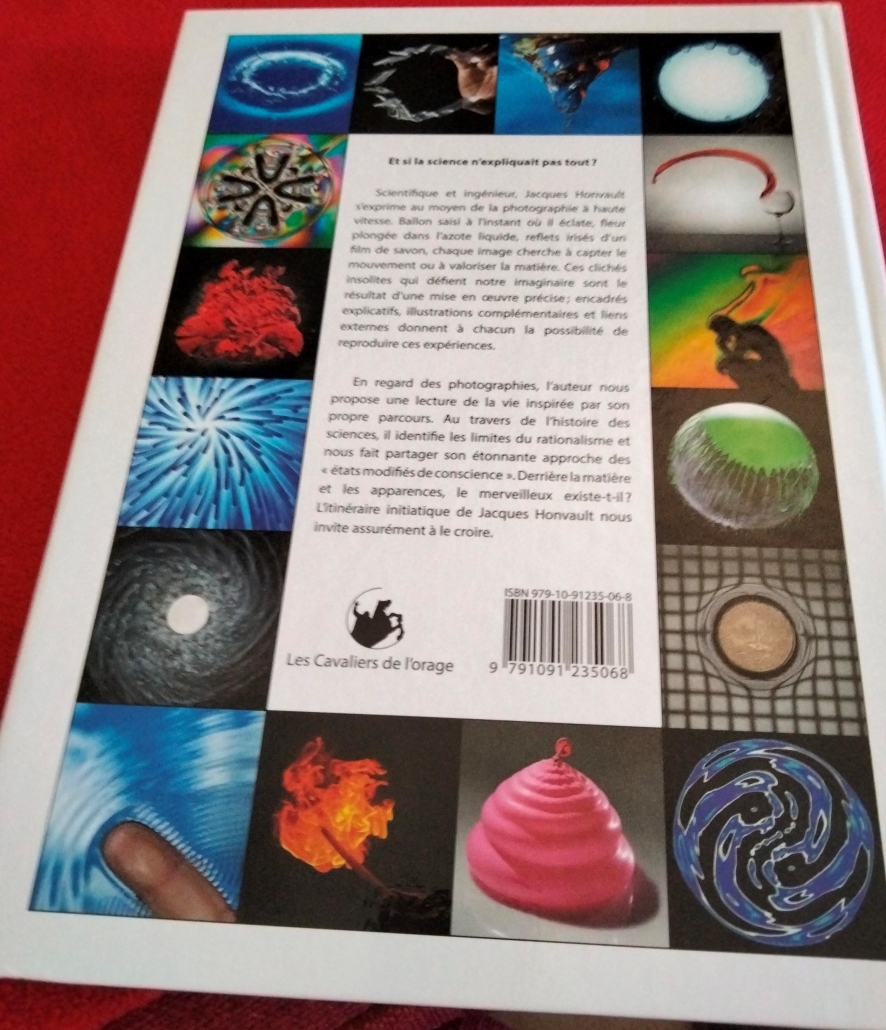
Many of you will remember a television advertisement for Bird´s Eye foods which declared their frozen peas to be ´as fresh as the moment when the pod went POP !´ I was put in mind of that by many of the exhibits in a photgraphy exhibiton by Jacques Honvault, a French artist who inquires into what actually happens in those scientific equivalents of when the pod popped. He captures colours in stills motion shots to show us what words alone perhaps could not tell us and has shared his work with the world in various exhibitions and in a book called ConSciences (see back coiver left)
We caught a photographic exhibition, housed with no real fanfare in a church now being put to alternate use in these covid times on the marina in Playa Blanca. We stumbled into the place on our way to restaurant around the corner, having noticed the lights on in the church. This beautiful building had held surprises for us on previous occasions. Ten or twelve years ago, having heard beautiful voices coming from its interiors, we stepped inside to see a mother and two daughters rehearsing a folk-lore vocal and timple and guitar concert to be held there a few days hence. I interviewed them for my all across the art pages in The Rochdale Observer, creating for myself, and I hope for them, an ínternational´ awareness.
This church / art gallery was tonight beautifully lit against the darkness outside, (it being around 7.30 pm on a January evening). The mountings of the works, and the light that bathed them, were perfectly set. There were helpful pamphlets and books for sale, but the venue was deserted except for a lady who sprang to attention as we entered, and told us we were very welcome. We fell into conversation and my wife Dee and I learned to our utter chagrin that this was the very last hour of this exhibiton, which had been running, unknown to us, for a month or so. Introducing herself as Christine Carayon Sabater. she told us that she, too, is an artist, but was actually ´looking after this exhibition for a French artist friend of hers, who has now returned to his home in France.

She was warm and friendly and informative about the works, and she even put back closing time so that we could have a quick look round, as she spoke well of her artist friend, Jacues Honvault, (right)
´He is´, she told us, ´a great artist,… and very humble´.
She left us to wander the room, but our wandering was often brought to a stand-still as we gaped in open-mouthed awe at photographs capturing that very moment when the pod went POP ! Meanwhile, although we didn´t know it, Christine was making a long distance call to Jacques in France, telling him of our interest in his work. She came rushing back over to us, mobile in hand, saying Jacques would like to speak to us. It quickly emerged that we both thought this exhibtion would be a good subject for interview and we agreed to work via e mail and Google Translate. I sent my questions over in Franglaise and he responded in Frenglish and five days later this article was put to bed, awaiting the earliest available date for publication. Armed with a wonderful, prestigous coffee table book which he allowed Christine to give us as background information. I sent him an e mail that introduced jacques to the ´five bumns at the bar.´
Regular readers will know that the five bums at the bar are messrs. Who, What, When, Where and Why, all skilful interviewers at drawing insightful answers. They are so called because they all begin with the letter W and five times w written on a line drawn across a classroom blackboard looks very like a row of bottoms ! Its a very effective way of reminding schoolchildren how to ask open and searching questions. Obviously, then, I always try to follow that example.
So, WHO is Jacques? Is he a scientist, an artist or just simply a curious person?
I’ve always loved science, but I wanted to create rather than do basic research. So I took an engineering course. But when my first child was born, my wife entrusted me with the task of buying a camera and that was the shock: a camera is not only used to immortalize family memories, it is also a machine with which to explore the invisible. And photo after photo, I used my scientific and technical skills in an artistic approach. I want to ask the question: “Can the incredible sometimes be true?”. Sometimes, because this world is filled with fake news and other propaganda, we become suspicious and incredulous. That is why I explain my techniques in making the picture.
Of course curiosity is a main ingredient of my work: when I see an intact bottle and the next moment there are only pieces of glass, I know that there is a beautiful image that hides in this time interval that our consciousness can not reach.
While studying the Lanzarote exhibition, we were amazed by the dynamism of the colors and, strangely, by the calm of the explosive moments. WHAT results did you expect when you embarked on these experiments?
Often, I didn’t know what was going to come out in the photo. It is pure research, motivated by my curiosity. I strip my subject to leave only the absolute essential. And wherever I can vibrate a color, I strive to do so by using dyes, colored reflectors, or color gelatin in front of the projectors. Each photo contains a metaphorical link with a philosophical reflection. And sometimes, I want to translate a reflection by an image and I start looking for a scientific subject that would carry my reflection. The expected result is then a formal similarity of phenomenon captured. Because our imagination is often limited by currents of thought and other paradigms, using the formal imagination makes it possible to free oneself from it.
WHEN you have seen the final results of your work in each case, what are your immediate emotions?
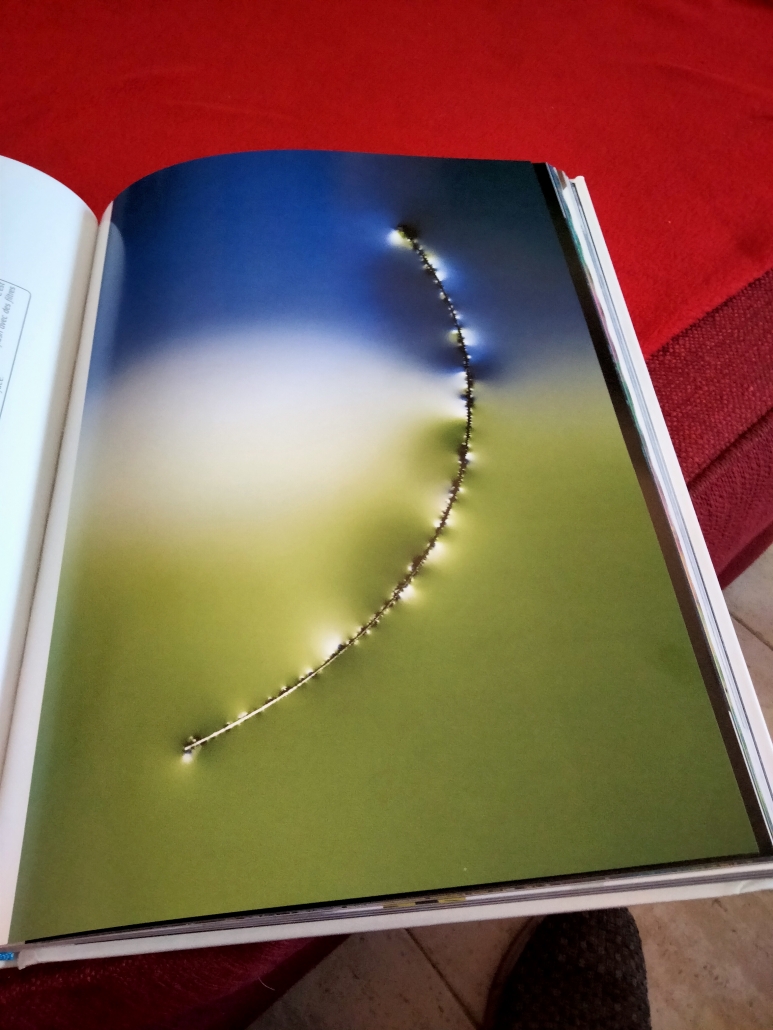
Amazement, amazement, relief, joy, incomprehension! For example, I set aside eight months to develop the right approach to make “My Scar” it was a great relief. During the first “reality level” photos, I was amazed at the speed at which the balloon tears and the resulting shape. As a reminder, I work in open flash, which means that I do my experiments in the dark and I see the result afterwards. And finally, let’s talk about “celebration”, that bottle of champagne that opens and where we can distinguish a bluish cloud in the middle of the white cloud.
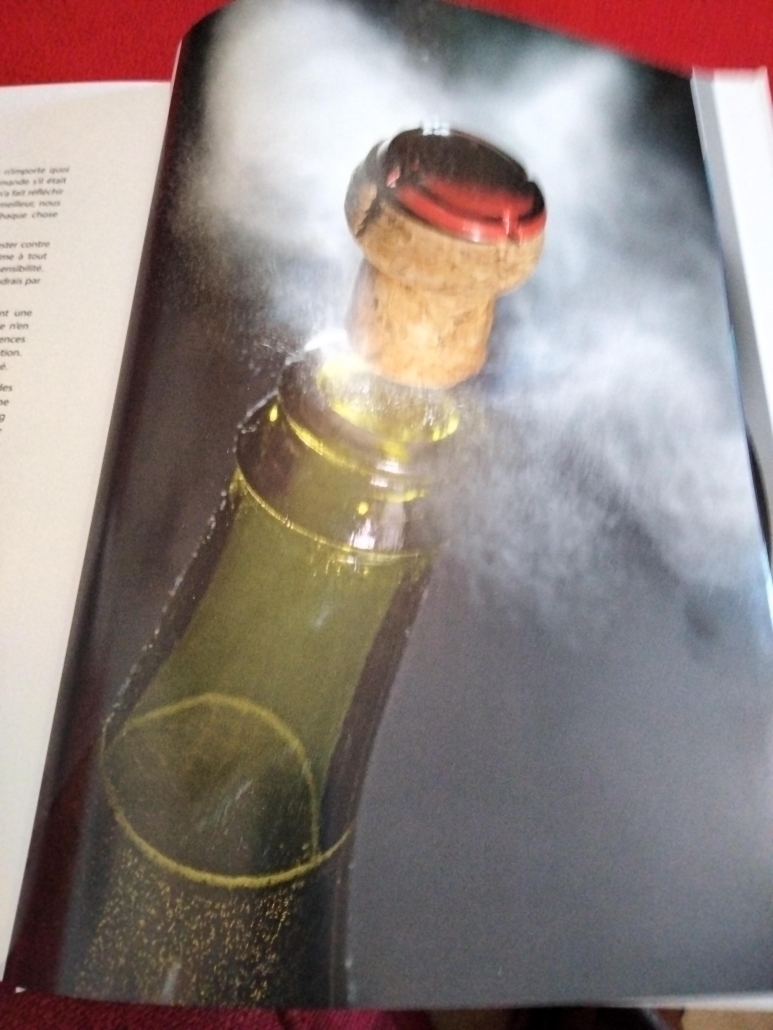
photo bottle This misunderstanding took 2 years to fade. I collaborated with the CNRS to get the explanation: the rapid change in pressure at the neck generates a cold so intense for a few thousandths of a second that blue crystals are formed. (Right9 So I was published in a peer-reviewed scientific journal for my discovery. Sometimes art advances science!
WHERE could this mix of poetry, photography, art and science lead? Do you see its integration into our education systems as a useful learning process, for example?
Absolutely, every year, I carry out workshops with schools. I show them how our senses make us partial witnesses of reality. Some animals have black and white vision, others blind, others perceive infrared. Yet they all know the world in their own way. But they know only a meagre part of it. I try to make it clear that it is the same for us humans. And that if science is a powerful tool, it is totally incapable of describing the whole world. Reason is not enough, we must also look at it with our senses and our soul.
WHY are the arts and sciences treated not only as separate, but also disparate, entities, and could your approach change overall thinking?
Science seeks to solve our fear of the unknown, to reduce the assumptions we make about the world. Art is a discipline where everything is possible! Our only brake is our imagination but in itself art is infinite where science is finite. For my part, I try to make photos of science phenomena that open the imagination. That if there are so many unknown things right next to us, then the world is decidedly much bigger than we think.
We understand that this exhibition in Lanzarote, so well described by Christine, who excited us with the work, was in a way a retrospective of your previous art. Do you want to tell us WHAT you have done since then, and what is your current work and methodology?
My work has brought about one less profound change. I went from being a scientist to believing in a metaphysical world. I know very little about this world but enough to have absolute certainty of its existence. I no longer need to photograph the world around me because since then, my curiosity has focused on our inner world
Check out : https://fr.wikipedia.org/wiki/Jacques_Honvault

Meanwhile we can announce an exhibition currently running on the island at The Lanzarote Art Gallery under the title of 3 de Corazones.
This exhibition, which has been open since 14th January, is of three artists : Marité Crespo, Ale Feijó, and Begoña Lafuente. We have regularly featured The Lanzarote Art Gallery on these pages, having visited a number of exhibitions there by exciting artists such as Masqali.
This exhibition introduces three artists with work available through the Gallery. The Lanzaroter Art Gallery always rewards a visit with evocative an porovocative paintings and scuylptures on display. The gallery web site, with its virtual website on which this exhibition will also be shown, is a massively entertaining, opinionated and comprehensive guide to art buyers, art collectors and for those of us who simply love art and might just be browsing.
The Lanzarote Art Gallery faithfully follows all covid protocols and you have room and time to follow a socially distanced route around its exhibitions. Owner Eduardo Ferina tells Sidetracks And Detours that he is particularly proud of this new exhibition, that brings together three artsist, including two from Arentina and one from Spain.

Marite Crespo, from Argentina says of his work :
´My paintings have been exhibited nationally, and internationally. With them I describe the basis of the compositions as a vital force that manifests itself in gestures, animals, people and all the power of symbols, codes and strokes, which make us reflect on which make us reflect on our world and our time´.
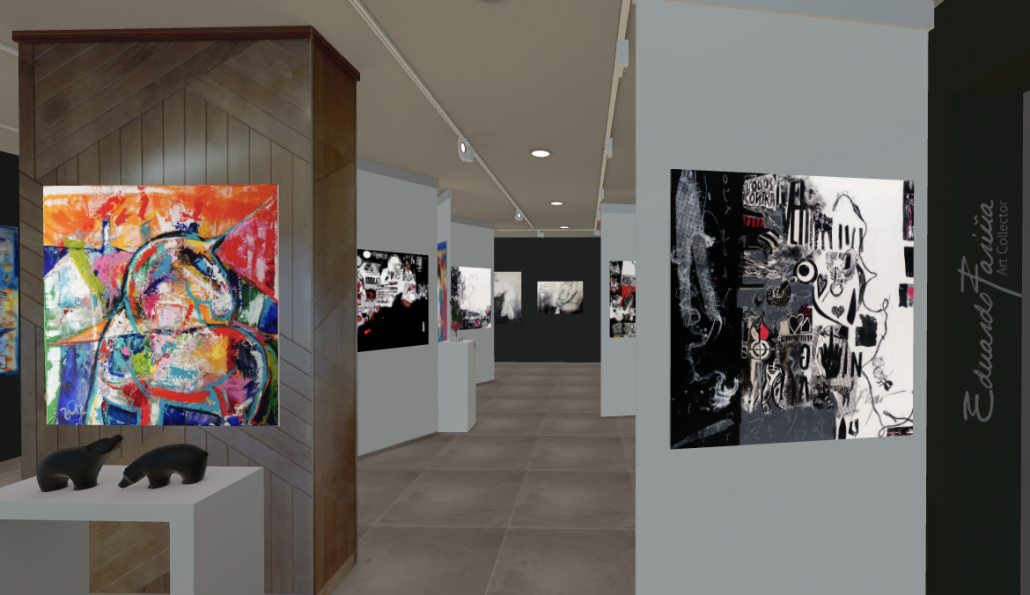
Alejandra Feijó, also from Argentina,. offers us an intimate and personal look that is manifested in his works through the technical skill in the representation of bodies, gestures loaded with emotional tension. She describes her work this way: “When I paint women, they and I are the same person, with no past or future, only in the here and now. Beautiful, sensual, erotic, imperfect, strong, vulnerable women… Women’s Bodies… Women and their bodies… My women are one woman… it is me, leading all the others in the artistic representation of my interiority´.

Begoña Lafuente, (Spain, 1969) is a pictorial, graphic and multimedia artist; currently, he develops his main creations from his studio next to the North Sea, in Holland. I am an explorer of the essence of ART, I marvel at why there are timeless pieces and why others fall into oblivion. Art should be a timeless conversation where not everything is said, but suggested. The untold meanings are those that enrich, baffle and arouse the interest of the viewer and make a piece unforgettable.
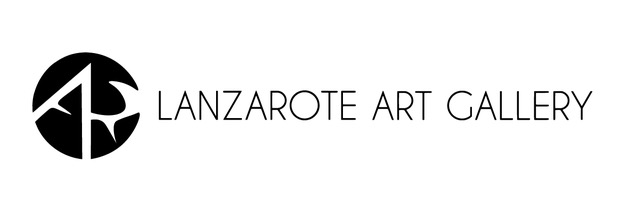
Exhibitions at The Lanzarote Art Gallery are always perfectly displayed in what is a light and spacious gallery. Unfortunately we were unable to attend the inauguration earlier this month but as the exhibition now runs through until 14th March we will be able to visit and enjoy a walk round and create a review.
Watch this space




Leave a Reply
Want to join the discussion?Feel free to contribute!